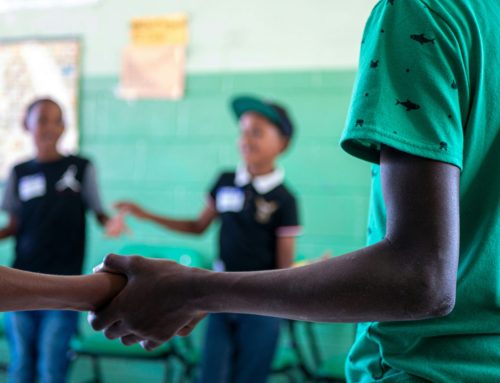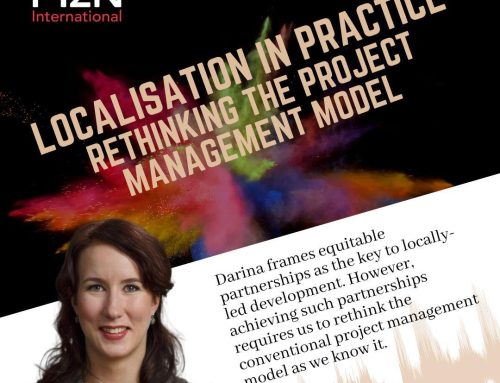Last week USAID held its quarterly Business Forecast & Partner Update, outlining planning for future funding opportunities. The session covered essential topics, including updates to the acquisition and assistance Strategy, private sector engagement, and progress in localization. Here are the key takeaways.
Acquisition & Assistance
The session kicked off with news about USAID’s leadership changes, introducing Jami Rodgers as the new Senior Procurement Executive, Chief Acquisition Officer, and Director for the Office of Acquisition and Assistance. Rodgers began by highlighting that in the last fiscal year, USAID obligated $38.1 billion through over 23,000 actions—a notable increase of $1.6 billion from the previous year.
He also announced the roll out of a new translation program, as part of the A & A strategy. This allows on-demand translation services for request for information, requests for application, and final Applications in French, Spanish, and Arabic, with plans to expand in other languages which ultimately means they will make more direct awards to local organizations.
Localization progress
USAID’s Localization targets were reminded:
Target 1: USAID will provide at least a quarter of all our funds directly to local partners by the end of FY 2025.
Target 2: By 2030, 50 percent of activities will place local communities in the lead to co-design an activity, set priorities, drive implementation, or evaluate impact.
Empowering local leadership lies at the heart of USAID’s programs, and the introduction of the Locally-Led Programs Indicator marks a significant stride in this direction. In short, this indicator outlines which actions and approaches meaningfully create space for local leadership across USAID’s acquisitions and assistance processes.
The list comprises 14 good practices categorized into four groups, each emphasizing different ways in which USAID can promote local voices, local leadership, and local decision-making.
USAID’S slide deck Business Forecast & Partner Update Webinar 7th December
An activity is deemed “locally led” if it employs at least two good practices across a minimum of two categories. For detailed insights, access the slides.
USAID aims for the reporting on this indicator to prompt USAID Missions, Operating Units, and implementing partners to contemplate questions such as “What are we doing? What more can we be doing? What makes sense for us? What doesn’t make sense for us? How can we be more intentional about working together to put local actors in the lead?”
While this indicator serves as a valuable starting point for these discussions, the 14 good practices provided are not an all-encompassing list of how local voices can be elevated in the work. They are piloting this indicator this year, looking at about half of USAID’s portfolio.
Faith-based & neighbourhood partnerships update
Recently, USAID released “Building Bridges In Development: USAID’s Strategic Religious Engagement Policy,”. This policy – the first of its kind at USAID – builds upon USAID’s commitment to locally led and inclusive development by affirming the essential role religious actors play in their communities. Find out more on the policy ands it’s three primary goals here.
DEAI (Diversity, Equity, Inclusion, and Accessibility) update
The update introduces a structured approach to advancing the global mission in Diversity, Equity, Inclusion, and Accessibility (DEIA). Launched last year, the Equity Action Plan (EAP) outlines five key strategies focusing on People, Partnerships, Programs, Policy, and Practice. The framework will be disseminated to missions next year.

USAID’S slide deck Business Forecast & Partner Update Webinar 7th December
Access more on the 5Ps strategy here.
PSE (Private Sector Engagement) Update
The Corporate Partnering Portal was announced – designed for companies wishing to collaborate with the Agency (outside of implementing projects and programs through traditional contracts and grants).
This portal will promote partnerships with the private sector where alignments exist, as well as articulate how collaboration works between companies and the Agency. The site is intended for multinational, regional, and large local business leaders inexperienced with USAID collaboration. See it as a tool to help guide business leaders who might have questions about collaboration.

USAID’S slide deck Business Forecast & Partner Update Webinar 7th December
Why it matters – This portal holds will simplify the process for companies seeking collaboration with USAID. By providing clear key messages in accessible corporate language, it fundamentally enhances the information-seeking experience for potential partners. This, in turn, will foster increased engagement and ensure the generation of higher-quality leads.
For more see USAID’s Business Forecast webpage.
The Forecast as of 7th Dec – Regularly review the Forecast to ensure you have the latest information.





